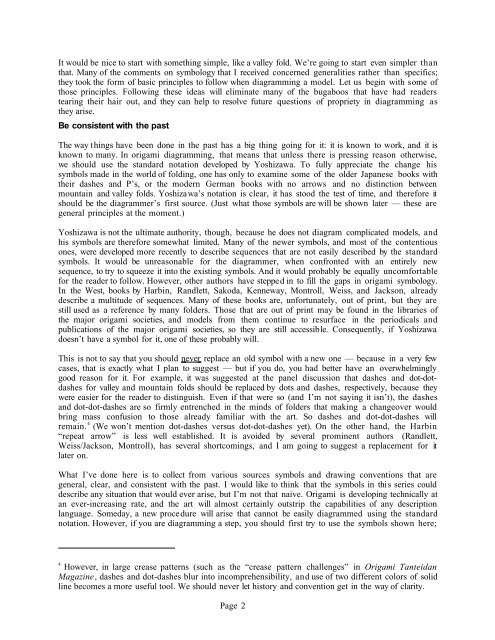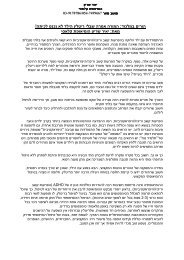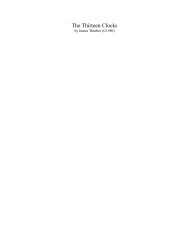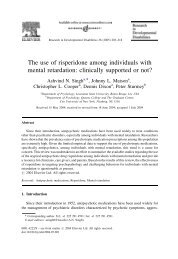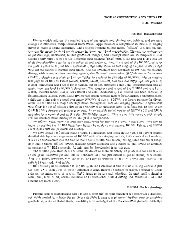Origami Diagramming Conventions: A Historical Perspective
Origami Diagramming Conventions: A Historical Perspective
Origami Diagramming Conventions: A Historical Perspective
You also want an ePaper? Increase the reach of your titles
YUMPU automatically turns print PDFs into web optimized ePapers that Google loves.
It would be nice to start with something simple, like a valley fold. We’re going to start even simpler than<br />
that. Many of the comments on symbology that I received concerned generalities rather than specifics;<br />
they took the form of basic principles to follow when diagramming a model. Let us begin with some of<br />
those principles. Following these ideas will eliminate many of the bugaboos that have had readers<br />
tearing their hair out, and they can help to resolve future questions of propriety in diagramming as<br />
they arise.<br />
Be consistent with the past<br />
The way things have been done in the past has a big thing going for it: it is known to work, and it is<br />
known to many. In origami diagramming, that means that unless there is pressing reason otherwise,<br />
we should use the standard notation developed by Yoshizawa. To fully appreciate the change his<br />
symbols made in the world of folding, one has only to examine some of the older Japanese books with<br />
their dashes and P’s, or the modern German books with no arrows and no distinction between<br />
mountain and valley folds. Yoshizawa’s notation is clear, it has stood the test of time, and therefore it<br />
should be the diagrammer’s first source. (Just what those symbols are will be shown later — these are<br />
general principles at the moment.)<br />
Yoshizawa is not the ultimate authority, though, because he does not diagram complicated models, and<br />
his symbols are therefore somewhat limited. Many of the newer symbols, and most of the contentious<br />
ones, were developed more recently to describe sequences that are not easily described by the standard<br />
symbols. It would be unreasonable for the diagrammer, when confronted with an entirely new<br />
sequence, to try to squeeze it into the existing symbols. And it would probably be equally uncomfortable<br />
for the reader to follow. However, other authors have stepped in to fill the gaps in origami symbology.<br />
In the West, books by Harbin, Randlett, Sakoda, Kenneway, Montroll, Weiss, and Jackson, already<br />
describe a multitude of sequences. Many of these books are, unfortunately, out of print, but they are<br />
still used as a reference by many folders. Those that are out of print may be found in the libraries of<br />
the major origami societies, and models from them continue to resurface in the periodicals and<br />
publications of the major origami societies, so they are still accessible. Consequently, if Yoshizawa<br />
doesn’t have a symbol for it, one of these probably will.<br />
This is not to say that you should never replace an old symbol with a new one — because in a very few<br />
cases, that is exactly what I plan to suggest — but if you do, you had better have an overwhelmingly<br />
good reason for it. For example, it was suggested at the panel discussion that dashes and dot-dotdashes<br />
for valley and mountain folds should be replaced by dots and dashes, respectively, because they<br />
were easier for the reader to distinguish. Even if that were so (and I’m not saying it isn’t), the dashes<br />
and dot-dot-dashes are so firmly entrenched in the minds of folders that making a changeover would<br />
bring mass confusion to those already familiar with the art. So dashes and dot-dot-dashes will<br />
remain. 4 (We won’t mention dot-dashes versus dot-dot-dashes yet). On the other hand, the Harbin<br />
“repeat arrow” is less well established. It is avoided by several prominent authors (Randlett,<br />
Weiss/Jackson, Montroll), has several shortcomings, and I am going to suggest a replacement for it<br />
later on.<br />
What I’ve done here is to collect from various sources symbols and drawing conventions that are<br />
general, clear, and consistent with the past. I would like to think that the symbols in this series could<br />
describe any situation that would ever arise, but I’m not that naive. <strong>Origami</strong> is developing technically at<br />
an ever-increasing rate, and the art will almost certainly outstrip the capabilities of any description<br />
language. Someday, a new procedure will arise that cannot be easily diagrammed using the standard<br />
notation. However, if you are diagramming a step, you should first try to use the symbols shown here;<br />
4<br />
However, in large crease patterns (such as the “crease pattern challenges” in <strong>Origami</strong> Tanteidan<br />
Magazine, dashes and dot-dashes blur into incomprehensibility, and use of two different colors of solid<br />
line becomes a more useful tool. We should never let history and convention get in the way of clarity.<br />
Page 2


